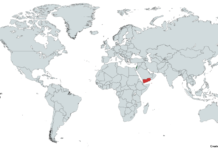Over 100 people have contracted the Coronavirus(COVID-19) in the United States and 6 people have died. All of the Coronavirus deaths in the US have currently been in Washington state in the Seattle area.
In response to the Seattle deaths, Washington state has declared a state of emergency and Dr. Jeff Duchin, chief health officer for the Seattle and King County Public Health Agency said, “We expect the number of cases will continue to increase in the coming days and weeks, and we are taking this situation extremely seriously. You can expect over the next two weeks to hear more from us about community mitigation measures and the right time to do it. The risk for all of us of becoming infected will be increasing. And although most of the cases will be mild or moderate, the infection can cause serious illness and there’s a potential for many people to become ill at the same time”.
At a briefing in Geneva Director-General of the World Health Organization, Dr. Tedros Adhanom Ghebreyesus said,”We are in uncharted territory. We have never before seen a respiratory pathogen that is capable of community transmission, but which can also be contained with the right measures. With early, aggressive measures, countries can stop transmission and save lives. I think we have a common enemy now. And using health, and especially fighting this virus, as a bridge for peace is very, very important. We have to stand together in unison to fight it, and these early signs are very encouraging”.
Worldwide over 90K people have contracted the virus and over 3K people have died since the virus has started.
The CDC said the virus can be spread in multiple ways including:
- Between people who are in close contact with one another (within about 6 feet).
- Through respiratory droplets produced when an infected person coughs or sneezes.
- It may be possible that a person can get COVID-19 by touching a surface or object that has the virus on it and then touching their mouth, nose, or possibly their eyes, but this is not thought to be the main way the virus spreads.
Researchers at John Hopkins University created a Coronavirus outbreak map to show the latest updates which include total confirmed cases, the total number of people who have recovered from this illness and the total number of people who have died from this terrible illness.
The CDC has recommended the following for preventing the virus from spreading:
- Avoid close contact with people who are sick.
- Avoid touching your eyes, nose, and mouth.
- Stay home when you are sick.
- Cover your cough or sneeze with a tissue, then throw the tissue in the trash.
- Clean and disinfect frequently touched objects and surfaces using a regular household cleaning spray or wipe.
- Follow CDC’s recommendations for using a facemask.
- CDC does not recommend that people who are well wear a facemask to protect themselves from respiratory diseases, including COVID-19.
- Facemasks should be used by people who show symptoms of COVID-19 to help prevent the spread of the disease to others. The use of facemasks is also crucial for health workers and people who are taking care of someone in close settings (at home or in a health care facility).
- Wash your hands often with soap and water for at least 20 seconds, especially after going to the bathroom; before eating; and after blowing your nose, coughing, or sneezing.
- If soap and water are not readily available, use an alcohol-based hand sanitizer with at least 60% alcohol. Always wash hands with soap and water if hands are visibly dirty.









